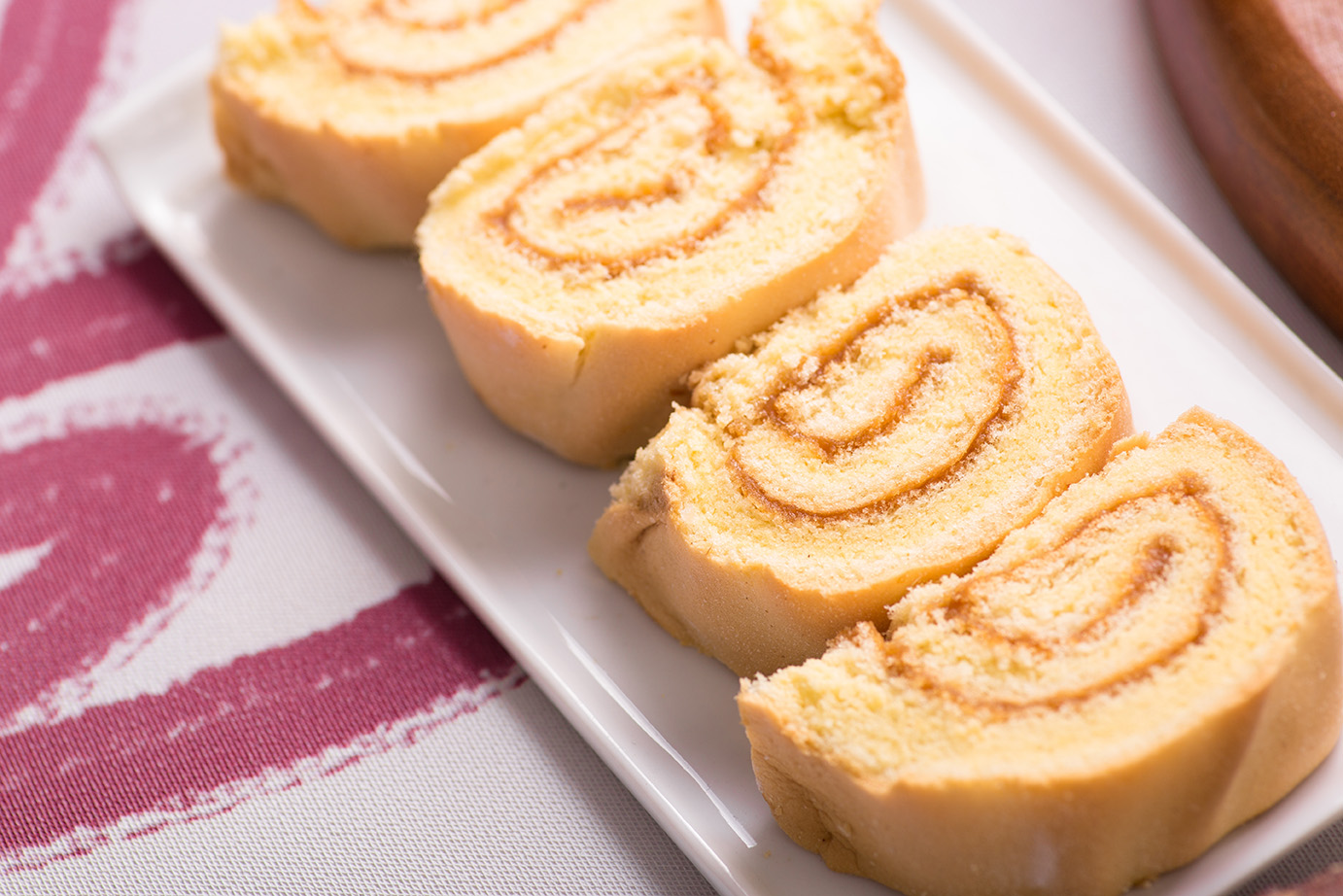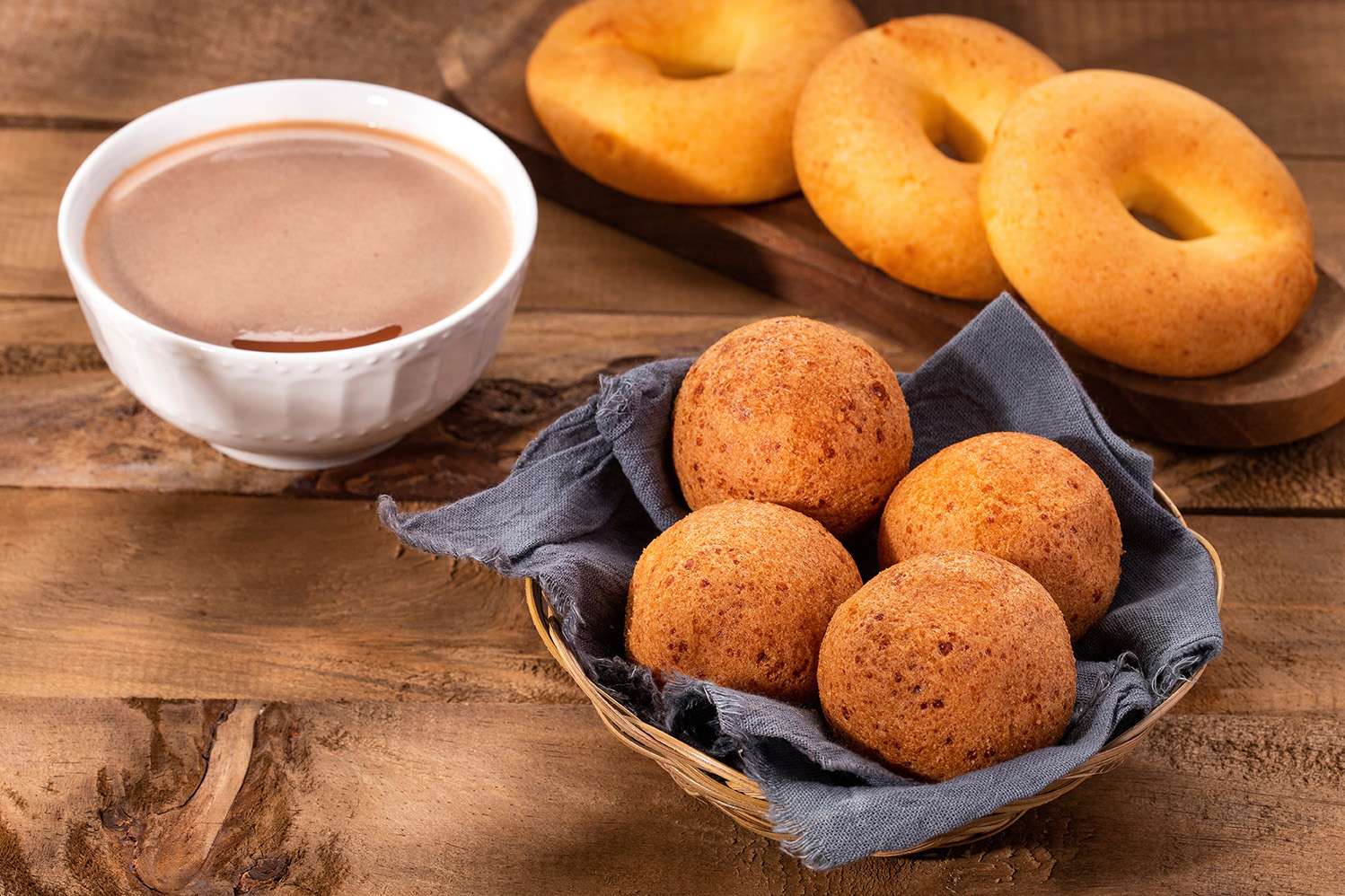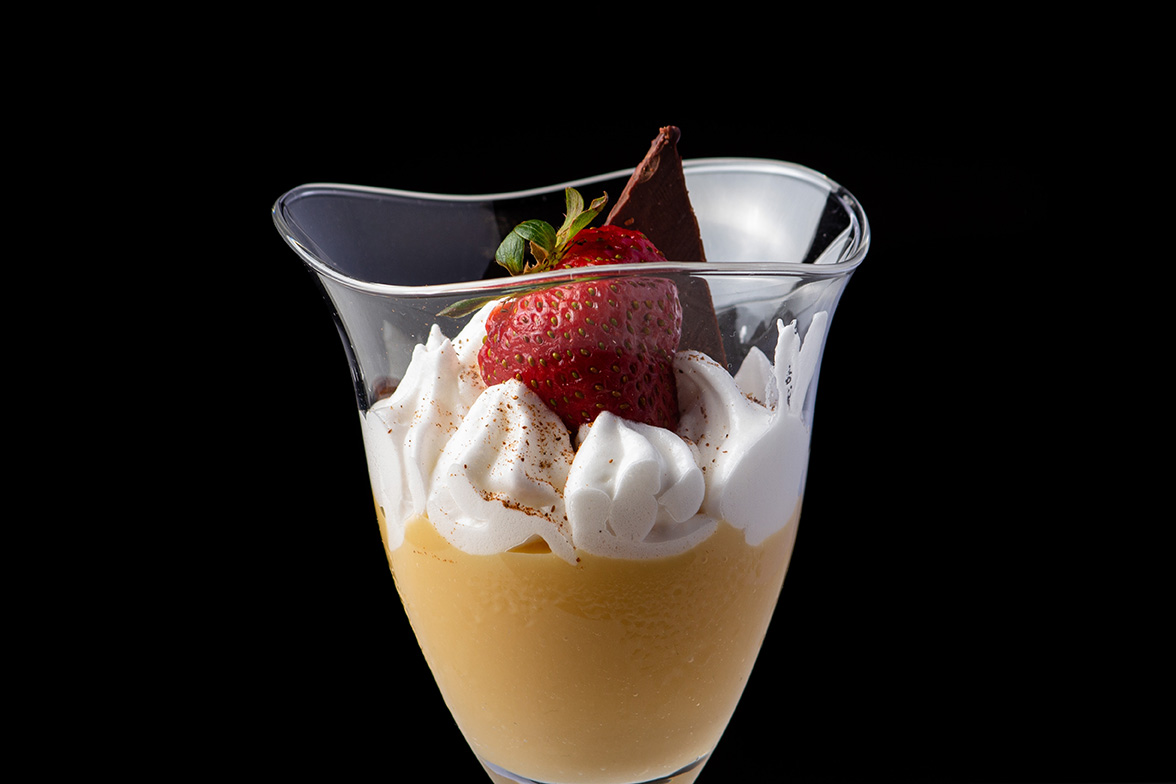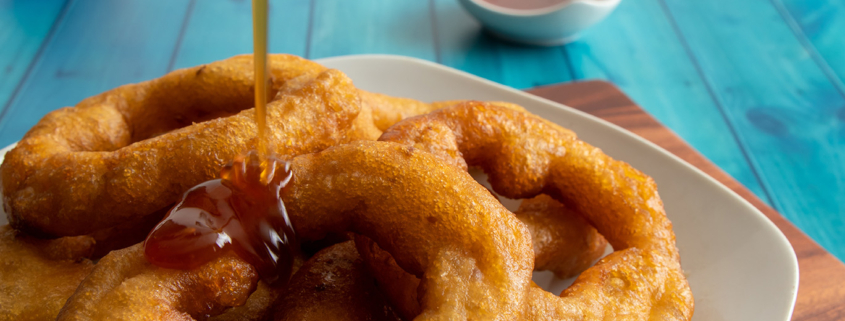The Smart Traveler’s Guide To Peruvian Desserts
Peru is a nation with thousands of years of culinary history: a cultural richness reflected in its desserts.
Whether you’re hiking through villages of the Andes, enjoying fine dining in Miraflores, or taking a romantic walk on the beaches of Lima, there’s sweetness to be found. On your next Peruvian adventure, why not check these must-try desserts off your list?
What Makes Peru’s Desserts Memorable?
Peru’s desserts are decadent delights. Like other parts of its dining scene, Peruvian desserts have been shaped by the country’s rare heritage.
Every recipe can draw on thousands of years of indigenous culinary cultures, trade with Latin American neighbors, European influences first introduced by Spain, and the more recently influential palates of Japan.
Modern foodies savor surprising flavor profiles in each bite: symphonies of global spices and sweetness.
Peruvian Dessert: Tasting History
Sugar wasn’t a staple crop for ancient Peruvians. Instead, the people of The Inca Kingdom, and the far earlier Moche and Caral civilizations, used other sweeteners.
As early as 5000 BC, the Caral grew a tuber varietal called “sweet oca,” a root vegetable with fig-like sweetness, firm flesh, and crisp juice. They and subsequent people used sweet oca as a starchy basis for early desserts.
Indigenous Peruvians also learned how to bake early on. Andeans began baking with corn flour 4000 years ago. This is likely when the earliest version of Peruvian sweet breads originated. At the same time, people in these ancient civilizations sometimes prepared sweet meals with local tropical fruits and honey. While we might not categorize that as dessert today, it formed the culinary foundation.
The first unambiguous desserts in Peru happened when the Spanish and the Inca met, in the mid-15th century AD. New crops, including cane sugar, were introduced to Peruvian soil. Inca flat breads previously eaten with honey could now be baked as sweetbreads.
From there, international trade, immigration, and the innovation of Peruvian chefs grew Peru’s desserts into truly iconic confections.
Spotlight: Peru’s Top Dessert Chefs
Two chefs have made quite the impact on Peru’s dessert scene. The first has garnered traditional pastries international renown. The second creates bold, new chocolate creations the way only Peruvians can.
Sandra Plevisani
One of the first chefs to bring Peru’s desserts into the spotlight was Sandra Plevisani. Lima’s “Queen of Dessert” is a self-taught pastry chef determined to keep the dessert traditions of the Andes alive.
For years, she’s traveled the country to collect and preserve the sweet recipes of different parts of Peru. Always, she presents them with honor—both in her cookbooks like Los Dulces de Moquegua, and on her hit cooking show.
Whether she’s rolling out local macerados and guargüeros, or baking platter-size gateau, Plevisani brings Peruvian desserts to the global stage like no chef ever before.
Astrid Gutsche
Astrid Gutsche is the head pastry chef at Astrid y Gaston. It’s Lima’s most popular eatery, and its one of the highest-rated gourmet restaurants in Latin America.
Gutsche’s passion is chocolate. Her truffles have earned a reputation for bringing together rich, locally-sourced flavors you wouldn’t expect together, packaged in a perfect, delicate cocoa sphere.
The location can’t be dismissed. For Gutsche, Lima is the only place for certain confections like the Magic Box sweet potato truffle. It’s a dark chocolate sphere dipped in salted Andean crisp corn, then filled with a fluffy, Peruvian sweet potato ice-cream ganache.

17 Must-Try Peruvian Desserts
The best desserts offer complex flavors, richness, and, above all else, sweetness. Discover 17 excellent Peruvian desserts that do exactly that.
1. Picarones Peruanos
Picarones Peruanos are Peruvian donuts. Traditionally, they’re made with sweet potato flour and squash, fried in a batter mixed with warming spices, and drizzled with chancaca syrup.
Picarones Peruanos were developed during the Spanish colonial era, as Spain imported the unrefined cane sugar used to make chancaca. Chancana differs from most sugar syrups: sugarcane juice, cinnamon, cloves, orange peels or lemon zest are simmered into a dark, rich solution.
In that era, Afro-Peruvians adapted recipes for buñuelos (Spanish fritters) using local ingredients, creating the first picarones. Soon after, the Peruvian donuts were popularized by the St. Clare’s Monastery in Lima.
Picarones are particularly popular as a late-night snack. In Lima, picaroneras are open at all hours—particularly in Miraflores! There are also a few 24-hour picaroneras in the Barrios Altos neighborhood, in honor of the monestary’s history.
Foodies recommend getting picarones and a savory anticucho kebab at the same time. They’re traditionally served together, and the grilled beef balances out the dessert’s sweetness.
2. Arroz Zambito
Arroz Zambito is a type of rice pudding “kissed by the sun.” Like picarones, it incorporates chancaca for a caramelized sweetness.
As a rice pudding dessert, arroz zambito is creamy, and it’s often milk-based. It’s often flavored with raisins, coconut shavings, and nuts, though every chef puts their own spin on it.
3. Pionono Peruano
Pionono peruano, or a Peruvian pionono, is a type of gateau–a jelly-roll-like sponge cake–filled with dulce de leche. The cake itself is light, airy, and delicately moist.
Unlike the more complex torta helada gateau, a pionono is a single, rolled layer. Toppings are optional.
Piononos hold a place in the hearts of Peruvians. It’s often baked for family celebrations and special occasions with loved ones–particularly Father’s Day, Mother’s Day, and birthdays. Many of the most beloved versions of piononos feel more like home than like fine dining.
Family recipes are common, with many variants showing a bit about the region or culture.
For example, aguaymantos (goldenberries) are important to many indigenous, Andean communities. Among Quechua families, the berries connect them to their Inca royal heritage. Thus, they often add aguaymanto jelly to their piononos.
The goldenberry jelly layer or topping has a tartness that balances the sweet dulce de leche. Moreover, the dessert becomes meaningful beyond the immediate celebration.
To taste the best piononos, look for a pastelería specializing in homestyle baked goods. Be sure to try different versions in different towns or neighbors!

4. Mazamorra (Sweet Version)
Mazamorra is a starchy pudding, akin to a thick pie filling, popular throughout Latin America. Depending on its preparation, its thickness and texture to an American custard, marmalade, or a jello-like compote.
While there are savory mazamorras filled with lentils or vegetables elsewhere, Peruvian mazamorras are fruit-filled desserts. There are two types: mazamorra morada (purple corn pudding), and mazamorra de caya (sweet oca compote).
Here, millenia-old traditional dishes—like corn ishkupcha and Andean highland porridge—were transformed in the Inca Kingdom.
The Incas innovated with traditional dishes, adding new Spanish ingredients to, ultimately, create mazamorra morada.
Today, this sweet purple corn pudding is a culinary touchstone. It uses a potato starch and cornstarch to thicken a sweet, jam-like blend of fruits and spices, and it holds whole fruit pieces inside. Food writers often describe it like a blackberry pie filling with a tropical twist.
It’s typically made alongside chicha morada. After the first phase of preparation, the remaining corn and fruit juice can be used for the popular corn drink.
Mazamorra de caya is less common, but it’s still a beloved dessert. It originates in the Andean mountains, where the oca tuber has been a staple crop for millennia. Traditionally, it’s made by drying sweet oca in the sun, then blending it with sugars, starches, and spices into a gelatinous dish.
Andean mazamorra de cayas are thicker than their purple corn counterparts, and they’re often served over custard or ice cream.
While mazamorra de caya was initially exclusive to central Peru, you can now try both types of mazamorra in Lima.
If you visit in October, you might see quite a bit of mazamorra morada sold by street vendors in honor of The Lord of Miracles. The month-long celebration is thematically purple, symbolizing the resilience and faith of the Peruvian people.
5. Humitas Dulces
One of the oldest desserts in Peru is humitas dulce: traditional Peruvian sweet bread.
Unlike other popular treats, humitas dulces didn’t change much upon Spain’s arrival. The Incan recipe was a semi-sweet flatbread baked with corn flour and fats, traditionally drizzled with honey and served in corn husks.
Yet, humitas likely predated the Inca Empire. Archeological evidence suggests earlier civilizations baked cornbreads akin to humitas thousands of years ago. Many of these civilizations–the Wari and Moche among them–baked with under-earth ovens called pachamanca. A few, like the Waqrapukara, even kept bees for honey.
Today, humitas dulces have evolved beyond honeyed cornbreads. They’re more like corncakes: sweet, soft, steamed desserts. Most are rich, made with vanilla, cinnamon, butter, and evaporated milk, and baked with raisins or cinnamon inclusions.
Visitors can find humitas dulces in most Peruvian neighborhoods and towns. That said, they’re particularly popular in Cusco, with an abundant variety in the city’s bakeries and grocers.
6. Buñuelo
In Peru’s culinary history, buñuelos are precursors to picarones. Like picarones, they’re donut-like (fritters). They’re simpler, though: fried balls or discs of wheat-yeast flour and anise.
Buñuelos were first created and popularized by the Mudéjars and Moriscos in Spain, an ethnic and cultural minority. In the 17th century, Spain expelled the Moriscos, forcing them to take refuge in other countries. For some, that meant Peru.
While Moriscos brought their culinary traditions with them, buñuelos were already somewhat popular in Peru by the time they arrived. The fritters were broadly popular in Spain at that point, and most Latin American regions’ communities had put their own spin on the treat.
In Peru, buñuelos led to the invention of piracones. In turn, picarones influenced Peruvian-style buñuelos. Like buñuelos elsewhere, Peru’s variants are made with wheat flour–a crop that took some time to adapt to the region.
Unlike other countries’ versions, though, Peru’s Buñuelos are strictly sweet, rather than savory. Moreover, the lower gluten inherent to Peruvian wheat gives resulting buñuelos a crumbly texture. As a result, most are made with extra butter and eggs to compensate, creating a cake-like texture.
While buñuelos are less popular than picarones in Lima, you can find them at most dessert bakeries.
Buñuelos are more popular in Arequipa, where Moriscos had a greater cultural influence.
7. Frejol Colado
Frejol Colado is a sweet black bean butter or pudding garnished with sesame seeds.
It was first created by Iqueño Afro-Peruvian communities in the Cañete and Chincha valleys of Peru, during the Spanish colonial era. Because they didn’t have access to flour for baking, they instead made desserts with ingredients at hand: milk, chancaca, warning spices, and beans.
Frejol colado is traditionally made for Holy Week, though it can be eaten at other times. Recipes are often passed down through generations, and the dish has come to symbolize the resourcefulness of Afro-Peruvian peoples.
Today, visitors can try the most praised versions of frejol colado in Chincha Alta, the birthplace of the dish. It’s also not hard to find in the dulcerías of Lima.

8. Suspiro Limeño
Suspiro Limeño is a romantic, fluffy, layered Peruvian merengue.
Its name translates to, “Sigh of a Lady of Lima.” According to legend, the poet José Gálvez Barrenechea inadvertently named the dish when he described it as “sweet and light as a woman’s sigh,” in his Lima Chronicles.
Suspiro Limeño is often layered into a wine glass to serve. The base layer is manjar blanco, a slow-cooked, caramelized dulce de leche custard, thickened with egg yolk. The top layer is an airy meringue cloud. While not traditional, popular variations infuse one or both layers with a port wine, for flavor.
Visitors can taste Suspiro Limeño at almost every restaurant in Lima. One of the best versions is served at Restaurant Huaca Pucllana, not far from Miraflores.
9. Alfajores
Alfajores are shortbread cookies sandwiches with a crumbly, melt in your mouth texture.
Alfajores were first invented in Arab cultures of West Asia and North Africa, and they quickly gained popularity in Spain. Spain introduced them to Latin America, and the cookies became a staple of Argentina’s afternoon tea.
Yet, countries outside Argentina put their own spin on them. Traditionally, Peruvian alfajores are filled with manjar blanco, a sweet caramel cream. They’re also served with coffee, rather than tea.
Tradition isn’t law, though, and modern pastry chefs love to mix it up! It’s easy to find alfajores filled with fruit jams, honey and nuts, or even chocolate mousse in Peru’s bakeries.
10. Champús
Champús is a hot dessert beverage, blending a corn base with fruit. In Peru, champús is traditionally made with soursop, quince, and apples.
For centuries, Champús have been sold by champuseras: street vendors, often Afro-Peruvian women, who sell the drink from carts on the streets of Lima. It’s often compared to a hot apple cider, an ideal drink to keep warm in cooler months.
Food critics describe the flavor of Champús as “delightful.” It’s praised as tart, sweet but not too sweet, and a generally well-balanced, cozy drink.
11. Tejas & Chocotejas
Tejas are fondant-wrapped sweet “dumplings” traditionally filled with manjar blanco, nuts, and fruit. Chocotejas are a variety with a chocolate shell instead of fondant.
Tejas are most associated with the city of Ica. At the dawn of the 20th century, chocolatier Iqueñas–local women, most with indigenous heritage–adapted traditional Spanish truffles. They made confections in their homes or convents, and, when making truffles, they switched out expensive ingredients like almonds with local peanuts or sacha inchi. As time went on, the confectioner iqueñas added unique touches, alterations and flourishes until tejas became a distinct, recognizably Peruvian treat.
Today, people travel halfway around the world for the best of Peru’s homespun truffles: Tejas Rosalia and Helena Chocolatier Chocotejas.
Outside Ica, Lima-based dessert chef Astrid Gutsche launched the chocotejas brand Melate. Having already made international headlines for her exquisite chocolate, her new brand draws acclaim for truly sustainable farming practices, committing to justice for Peruvian farmers, and taking tejas fillings to the next level.
12. Lucuma Ice Cream (+ Ten More Uniquely Peruvian Flavors)
Ice cream is a great way to beat the heat no matter where you are. Yet, location does affect at least one aspect of the beloved frozen treat: flavor.
While chocolate and vanilla are popular everywhere, order an ice cream on any of Peru’s beaches or boardwalks, and you’ll find the menu differs quite a bit! Here are just a sampling of the most popular Peruvian ice cream flavors.
- Lucuma, a fruit whose flavor profile lends a unique blend of maple, sweet potato, and caramel notes to ice cream.
- Huacatay, an herb also called “Peruvian black mint,” which tastes like basil and mint with anise undertones and a citrus tang.
- Cherimoya, a fruit sometimes known as “custard apple” for its creamy flesh, has a bold banana-pineapple taste with sweet, strawberry-like notes.
- Guanábana (soursop), a sweet-n-sour fruit with a velvety texture, offering a citrus tang, crisp tartness, and a sweet, soft aftertaste to ice cream.
- Maracuyá, also called passion fruit ice cream, a refreshing, dairy-free dessert with sweet and tart notes.
- Tamarind, a date-like tropical fruit pod with a complex flavor profile, offering ice cream a rich apricot-forward taste with tangy undercurrents and notes of caramel or molasses.
- Avocado, a creamy, fatty vegetal fruit, granting ice cream a hearty flavor and vibrant green color.
- Mamey, a Mexican fruit similar to pumpkin or sweet potato, gives ice cream a mild “pumpkin spice” flavor
- Yellow Chili Pepper (Ají Amarillo), a base pepper in savory Peruvian cuisine, creating ice cream with a gentle heat and sweet “bite”
- Aguaymanto, also called goldenberry or royal Inca berry, offers its distinct flavor profile–akin to tropical mango with notes of pineapple, tomato and vanilla–to both traditional and dairy-free ice creams.
- Chicha morada sorbet, a cold, non-dairy treat made with a non-alcoholic variant of purple corn drink, blended with quince, pineapple and spices
- Queso helado, a dairy-rich ice cream with the texture of cheesecake, typically blended with coconut, vanilla, and spices
- Yucamochi, a Japanese fusion dessert created by Nikkei chefs, ice-cream-filled sweet mochi balls made from Peruvian yuca (cassava) instead of rice
13. Torta Helada
Torta Helada is a classic Peruvian layer cake. The base layer is a light, fluffy sponge cake, usually flavored with vanilla or warming spices. It alternates with layers of a fruit-filled cream, and layers of gelatin. Traditionally, the fruit and gelatin layers are strawberry.
“Torta helada” can be literally translated as “frozen cake,” in English, though a more accurate translation might be “cool cake.” The gelatin and cream layers are chilled, creating a refreshing contrast. It’s a big reason why the dessert became a summertime staple in Peru.
Unlike some of the other desserts on this list, nobody knows the origin of torta helada. It seems to have been invented at some point in the early 19th century, perhaps just after Peru’s independence. Yet, it wasn’t until 1960 the dessert’s popularity truly soared.
Today, dramatic torta helada are often showpieces in bakeries.
14. Chapana
Chapana is a popular caramel-like sweet made of yucca flour, molasses, and anise. The treat predates both Columbus and the Inca Empire, and its recipe has hardly changed over the centuries.
Historically, chapana was wrapped in panca leaves to cook and serve. Today, banana leaves are more widely used.
The best chapana is smooth and chewy. Confectioners steam or grill the wrapped dessert until it reaches the perfect texture.
15. Limones Rellenos (Stuffed Lemons)
Limones rellenos are candied lemon peels (halves), stuffed with a rich, sweet spiced cream. Convent-style Limones rellenos are filled with dulce de leche, while gourmet varieties might be filled with lemon ice cream or yogurt.
They were first made in convents in the Spanish colonial era. Today, you’ll find versions of the candied lemons stuffed with coconut, mango or citrus fruit pulp, honey, or even whipped meringue in Peru’s confectioneries.
16. Guargüero
Guargüeros are dessert pastries made of flat fried dough that’s rolled and filled, similar to a canoli. Sweet potato flour is commonly used. The fried dough is delicate and flaky, and the roll is typically dusted with powdered sugar.
Traditionally, guargüeros are filled with dulce de leche. They were first created in Moquegua, and they’re still associated with Holy Week in that city. Fortunately, visitors can find guargüeros throughout the year, in most Peruvian cities. Versions with unconventional fillings abound, particularly those with quince and pineapple jam.
17. Doña Pepa’s Turrón
Doña Pepa’s Turrón is a colorful pastry built from layers of cookie sticks held together by layers of chancaca. It’s topped with multicolored sprinkles.
The treat is popularly associated with Lord of Miracles festivities in Peru. According to legend, Doña Josefa Marmanillo was a woman known as a great cook, whose arms became paralyzed due to an illness. Previously enslaved, her partial paralysis allowed her to be emancipated.
She joined the procession of Señor de los Milagros, praying for healing. Then, she was miraculously healed.
In her joy, Marmanillo honored the saint with a new dish: Doña Pepa’s Turrón. The dessert captivated the saint and his devotees, and the rest is history.
Enjoy The Tastes of Peru With Caravan
Peru is a country of extraordinary history, stunning natural landscapes, and flavors you won’t find anywhere else. On tours cultivated by Caravan’s masterful travel directors, you won’t miss a single thing.
Guests on our weeklong Peru with Machu Picchu never have to lift a finger. Everything from food to lodging to cultural events are ready to go long before you embark.
To book your spot, call us toll free at 1-800-227-2826. Or, contact our team at +1-312-321-9800 to learn more.
